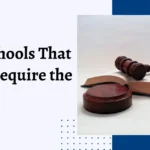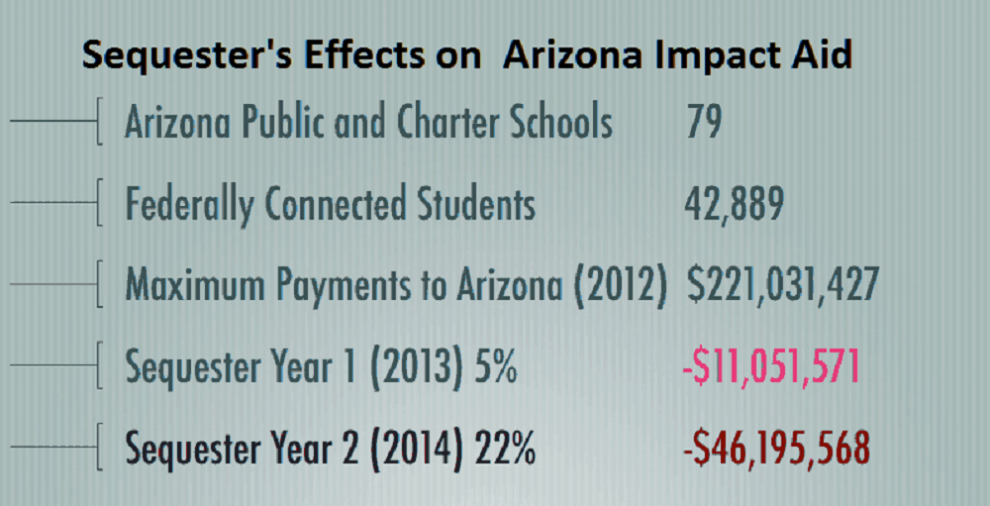When Piñon Unified School District realized the federal sequester would reduce Impact Aid for the second year in a row, they put the brakes on expenses not directly tied to students’ education.
“We stopped purchasing any capital assets not absolutely necessary to teach our children,” Superintendent Doug Vaughan said.
That has meant repairing buses that would normally be considered beyond their useful service life due to broken frames, cracked bodies or other “serious deficiencies,” deferring discretionary building maintenance and refurbishments, and, whenever possible, not replacing staff members who leave the district.

The federal government pays Impact Aid to schools on or near federal or tribal lands which are not subject to state or local property taxes.
“The U.S. government is the only landowner in my district,” said Vaughn.
The assessed valuation of the district, located on the Navajo Nation in Arizona’s northeastern corner, is $500,000. Its tax rate is zero percent.
Arizona is the largest recipient of Impact Aid, which schools usually receive in the spring, to pay for their current year operating expenses.
The Piñon district is among the 79 Arizona public school districts and charter schools that saw their Impact Aid funds reduced by 5 percent, or $11.05 million, in fiscal year 2013 to $221.03 million, and by 22 percent or $46.19 million this fiscal year, said Larry Wallen, executive director of the Arizona State Impact Aid Association.
Further automatic cuts through sequestration would have gone into effect Jan. 15, 2014, if the Congressional Budget Committee had not reach an agreement, but an agreement was passed by both the House and Senate in early January.
 Those whose districts receive Impact Aid also worry that funding levels could be reduced.
Those whose districts receive Impact Aid also worry that funding levels could be reduced.
“While Impact Aid has been presented at level funding, who knows (what will happen),” Wallen said. “The problem is very serious.”
Vaughan is frustrated.
“My students have no other source of tax revenue available to keep their school open when the U.S. government shirks its responsibility to fully fund the Impact Aid program,” Vaughan said. “Yet, the U.S. government has failed to fully fund this program for decades, and now enacts punishing cuts year after year that hurt some of the most vulnerable American students in our country.”
Vaughan said that all Piñon’s federal programs have been hit hard by sequestration, but that the most significant impact has come through loss of Impact Aid dollars, which historically have represented about 42 percent of the district’s budget.
“The majority of our Impact Aid dollars cover employee salaries and benefits,” Vaughan said. “We also use our Impact Aid funding to replace large capital assets such as buses at the end of their service life. We currently run 34 buses daily over almost 2,000 miles of some very primitive roads. Impact Aid has allowed us, in the past, to replace our buses before they became unsafe for our children or maintenance or repair nightmares.”
The most common effects of the cuts have been deferred maintenance, freezing staff salaries, eliminating programs, increased class sizes, and reduced extracurricular activities, summer programs, and transportation routes, Wallen said.
For example, Window Rock Unified School District closed three schools in fiscal 2013, laid off 35 certified personnel and eliminated 30 support staff. Sanders Unified School District stopped construction projects, froze salaries and reduced or eliminated field trips and staff development. Fort Huachuca Accommodation School District reduced staff and increased class sizes.
When the Piñon district received early disbursement of half their Impact Aid on Oct. 29, 2013, it was immediately put to use pay teacher salaries and benefits, Vaughan said.
Despite the cuts, Baboquivari Unified School District in Sells on the Tohono O’odham Nation is doing all right, said Superintendent Alberto Siqueiros. Its current position, however, is not sustainable if the sequester continues or Impact Aid funding decreases.
“We’re not closing schools down, but we’re not building either,” Siqueiros said. “The sky is not falling – yet. If sequestration were to continue, then we’d have a different conversation in four or five years.”
The Baboquivari district receives between $5 million to $5.5 million in Impact Aid, which funds 40 percent of teachers’ salaries, all district building needs, and was used to improve the salary schedule to attract more highly qualified staff, business manager Daniel Fleury said.
Paying down a revenue bond early and maintaining an operating cash reserve of Impact Aid from last spring helped the district deal with this year’s Impact Aid cuts, Fleury said.
“If we had that $1.4 million bond payment still, we’d be in a world of hurt just like everyone else,” said Fleury, noting that $400,000 in savings covered the first round of sequestration cuts.
Still, the district has held off on building a new 10-classroom elementary school wing until they see what happens with sequestration, Fleury said.
“If they keep chipping away – $400,000 next year, and $400,000 the year after that – it’s just going to destroy what we’re doing out here,” Fleury said.











